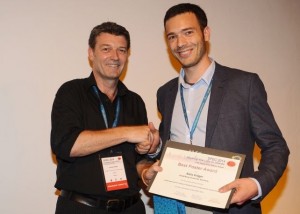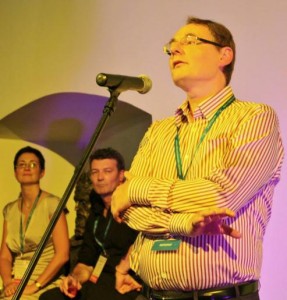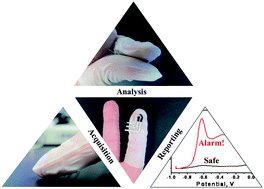The International conference, SPEC 2014: Shedding New Light on Disease, was held on the 17th – 22nd August in Krakow, Poland. The conference was Co-chaired by Prof. Malgorzata Baranska, Jagellonian University, Krakow, Poland, Prof. Hugh J. Byrne, Dublin Institute of Technology, Ireland, and Prof. Anna Sulkowska, Medical University of Silesia, Katowice, Poland.
The event was the 8th in the series of biennial conferences, the aim of which is to bring together clinicians and scientists who have joined forces in the quest for novel biomedical applications of Infrared and Raman spectroscopy to improve patient care. Recent advances in the biological sciences and medicine have led to an increasing demand for real time and minimally invasive chemical and structural informa¬tion on biological materials. Due to its unique fingerprinting capability, vibrational spectroscopy plays a significant role in histopathology, cytology, biopsy targeting, surgical targets, treatment monitoring and drug studies.
The conference aimed to highlight further advances in state of the art and emerging biomedical applications of Vibrational Spectroscopy framed under the themes of:
Translational research into in vivo clinical applications
Ex vivo tissue biopsies, body fluids and cytological samples for diagnostics and disease studies
In vitro cell culture and 3D models for Research and Medical applications
while reviewing the challenges in the context of other emerging technologies. The programme was constructed in an attempt to prioritise real world applications from the outset, systematically progressing from research towards in vivo, ex vivo and in vitro applications, as well as emerging technologies and data processing, and featured Plenary, Invited and Contributed presentations in each session. The Flash Presentation session provided an opportunity for Early Stage Researchers to orally summarise their poster presentations to the audience in a one minute pitch on the Monday evening (18th), in advance of the formal poster session, on the Tuesday (19th). The Renishaw prize for Best Flash presentation was awarded to Helena Ukkonen, for her presentation entitled “FTIR Imaging Identifies the Changes in the Tumor Microenvironment Caused by Different Cancer Cells”.

Prof. Hugh J. Byrne presents the Analyst prize for best poster presentation to Niels Kröger, Heidelberg University, Germany
Niels Kröger, Heidelberg University, Germany, was awarded the Analyst Poster Prize for his presentation on “Rapid Hyperspectral Imaging of Biological Tissue Using Quantum Cascade Lasers”, while best poster prizes were also awarded to Elisa Barroso and Roeland Smits, Erasmus University Medical Center Rotterdam, for the presentation “High-Wavenumber Raman Spectroscopy to Discriminate Squamous Cell Carcinoma From Healthy Tissue Based on Water Content” sponsored by WITec, and Mohamed Abu Ayoobul Ansary, Jagiellonian University, Poland, for the presentation “Optimization of conjugation of Au/Ag-core/shell nanoparticles with antibodies for SERS studies on endothelial cells” sponsored by Bruker.
A feature of the conference was the daily discussion sessions which were aimed at a critical assessment of the routes towards the further development of clinical applications, under the heading “Quo Vadis? Spectropathology for the next generation” and were moderated by members of the SPEC International Advisory Board. The discussions, based around the three themes above, were loosely based on the agreed framework of:
(i) What are the most achievable, strategic target applications
(ii) What are the technical challenges, and how can they be addressed
(iii) What are the challenges to implementation (legislative, clinical trials etc.), and how can they be addressed
The deliberations of the discussion groups will contribute to a “Roadmap” paper in the special edition of international peer reviewed journal, Analyst, co-authored by the IAB moderators. The discussion sessions also enabled outline presentations of the UK EPSRC CLIRSPEC (Clinical Infrared and Raman Spectroscopy for Medical Diagnosis) and the EU COST network Raman4clinics (European Network on Raman-based applications for clinical diagnostics) and their respective workprogrammes to promote and progress the translation of vibrational spectroscopic technologies into the clinical environment.

Prof. Peter Gardner (Uni. Of Manchester), addresses the Gala Dinner on behalf of the SPEC International Advisory Board, outlining proposals for the establishment of the International Clinical Spectroscopy Society.
The programme and discussions clearly demonstrated that there has been much progress in the understanding of the complexity of spectroscopic characterisation of biological materials, and data preprocessing and postprocessing methods can be applied with confidence to give true biochemical representations of tissue, cells and bodily fluids. Spectroscopic techniques remain a powerful tool for basic research and may find applications in vitro for toxicology and drug screening. Emerging technologies continue to push the performances in terms of acquisition speed, spatial resolution and multimodality. In terms of translation to a clinical environment, there remains a lack of standardisation of measurement and data analysis protocols ex vivo, while cost implications need also to be considered. The increased development of fibre probes shows great promise for in vivo intra-operative applications. However, the need to engage the medical community remains an imperative.
A significant outcome of the satellite meeting of the SPEC IAB was the agreement in principle to the establishment of an International Clinical Spectroscopy Society, as a not-for profit Private Company Limited by Guarantee with charitable status. The Society will primarily promote the translational of spectroscopy into the clinical environment to improve patient diagnosis and prognosis. The SPEC Conference Series will be the primary vehicle of the Society towards this goal. The IAB also accepted the proposal that the next in the series, SPEC 2016, will be held in Montreal, Canada.
The conference attracted 282 participants from 32 countries around the globe. The programme included 62 oral and 191 poster contributions. It was sponsored by a number of commercial enterprises and other organisations, including: Witec, Renishaw, Agilent Technologies, Bruker, NT-MDT, Art Photonics, Thermo-Scientific, Comef, Horiba Scientific, Bio-Tools, Photon Etc., London Spectroscopy, Analyst, CLIRSPEC, PAN, PAU, ABE, KNOW im. Smoluchowskiego, LOT Quantum Design.
The conference was held against the backdrop of the 650th anniversary celebrations of the Jagiellonian University, and enjoyed honorary patronage of the Jagiellonian University, the Mayor of the City of Krakow, the Malopolska Voivodeship and the Marshal of the Małopolska Voivodeship.
And remember, attendees of the SPEC 2014 conference are all invited to submit to the upcoming themed issue in Analyst: deadline 17th October, 2014
Contact us here for more information
Take a look at our previous SPEC themed issue; Optical Diagnosis



















